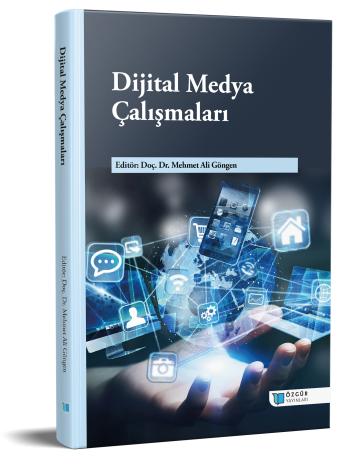
Digital Media Studies
Synopsis
Human history, which is divided into epochs on the basis of production, is facing a new situation today. The name of this new era created by those who exist in the digital space and those who do not exist in the digital space has already been called: the digital age. According to the “We Are Social” 2023 report, the number of social media users worldwide has reached 4.76 billion by 2023. According to the same report, there are 5.16 billion Internet users. This data corresponds to 59.4% and 64.4% of the world's total population, respectively. In fact, it is production that forms the basis of technological developments in this digital age. In this regard, there is nothing that has changed in the forms of relationship determined by production in human history. What is new is the replacement of material production by information production, that is, the evolution of power from the concrete to the abstract. What Baudrillard points to with “Reality turned into simulation… The universe we live in is a simulation universe,” is the fact that the technology that is developing as an extension of the human brain is redesigning all forms of relationships.
While the digital age has reshaped all the means of production, forms of production, social relations and power relations in general, it has also caused a transformation in communication practices and media studies. Manuel Castells expresses social transformation with the conceptualization of 'Network Society' as a social formation.
This book contains studies on the media leg of the digital age. In their study entitled “New media from panopticon to digital surveillance society”, Nihal Kocaağa and Ensar Lokmanoğlu, while focusing on surveillance practices in modern and postmodern societies, concluded that although the phenomenon of surveillance occurred in both periods, it evolved into a process that is more destructive and in which individuals knowingly contribute to in the postmodern period. The phenomenon of surveillance, discussed in a theoretical context, has turned into a situation that is operated in almost every field and on almost everyone in an unlimited way in favor of capitalism with the new digital age.
With his work titled “Computational Communication Studies: The Era of Digital Research", Vahit Çalışır addresses the transformative change caused by the emergence of digital tools and methodologies in communication research. At the same time, the author summarizes the historical development of numerical approaches in communication studies and underlines their importance in understanding the complex dynamics of modern media environments.
Zafer Haklı examined the web typography used to maximize the impact of texts on the Internet, and dealt with the historical development of web typography, its importance, areas of use, tools and errors. A study by Özen Baş and Perrin Öğün Emre on the prevalence of exposure to Digital Violence among University students and methods of struggle, although limited to a narrow region, has revealed that University students' awareness in this area is at a high level. Meryem Altıntaş examined the ways in which femicides are handled on the social media and drew attention to the negative effects of photos made to speak through artificial intelligence.
Examining the change caused by the launch of digital broadcasting platforms in the dynamics of series production, Sezen Kayhan took part in the creative and technical teams of both television and digital broadcasting platform series within the scope of the research, and interviews were conducted with 13 participants. As a result of the research, it was found that the launch of digital broadcasting platforms caused a partial improvement in the working conditions of sector employees, but it was revealed that economic and political interventions are still a problem.
Mehtap Uyar, dealing with the reflection of the Digital Media topic on graduate theses written in the field of public relations, examined 132 master's and 40 doctoral theses written between 2019-2023 for this purpose. As a result of the study, it was found that students prefer to study the role of digital media / social media and digital media / social media usage issues respectively the most within the scope of digital media. According to the author, it will be important to do the studies to follow with an interdisciplinary understanding in the context of making a further contribution to the literature.In this book, we have included two more studies that are outside of digital media studies but fall into the field of communication. The first of these belongs to Aziz Tamer Güler, who analyzed the Joker film based on George Simmel's conflict theory. In this study, Güler examines the concepts of everyday life, meaning and conflict from a critical perspective through the Joker film, drawing on thinkers such as Henri Lefebvre and Max Horkheimer, as well as the sociologist Georg Simmel. Finally, H. Buluthan Çetintaş, in his study titled “Sustainability Communication”, explained the concepts of “sustainability”, “sustainable development”, “corporate sustainability” and “sustainability communication”, presenting evaluations and making suggestions for future studies.
We hope that this study, which includes various topics related to digital media studies, will contribute to its field.
Assoc. Dr. Mehmet Ali Göngen
October, 2023/ Gaziantep

